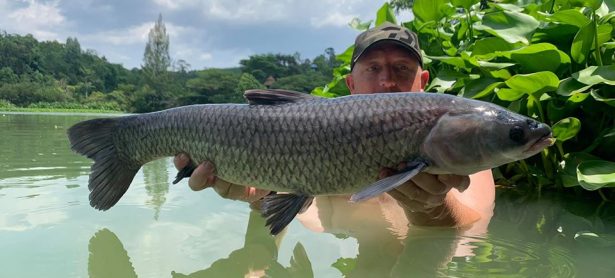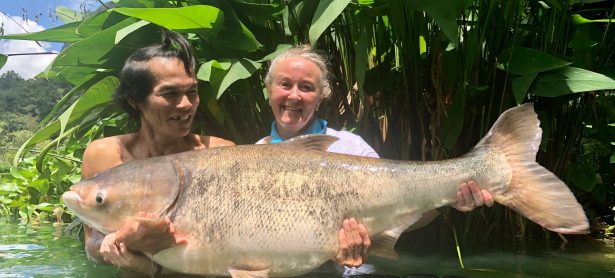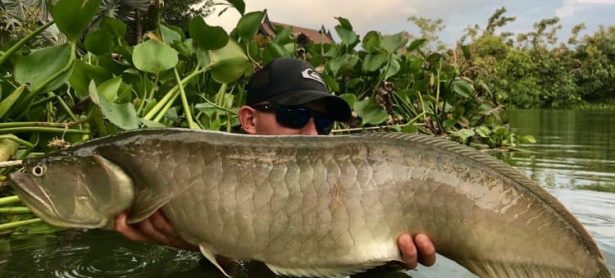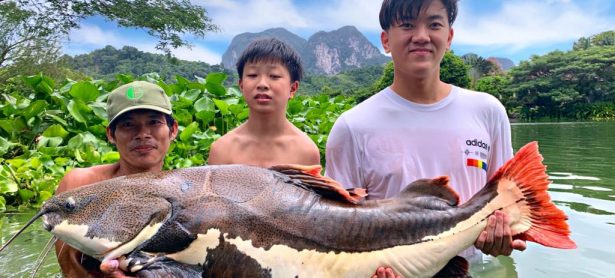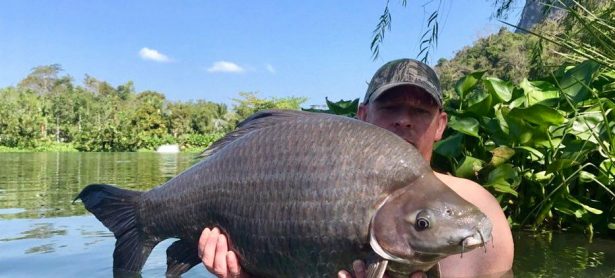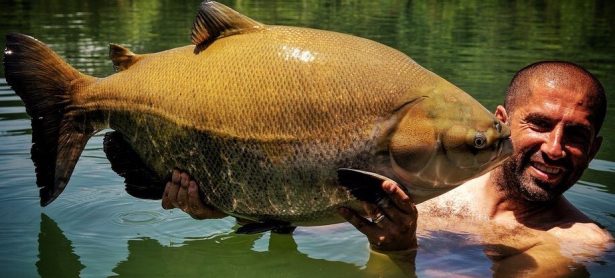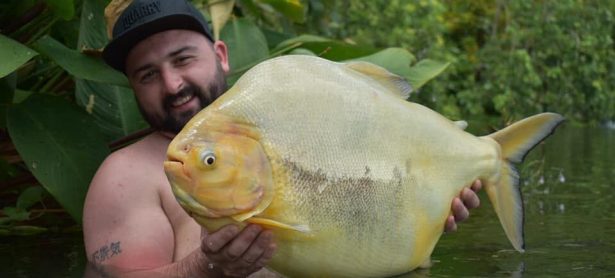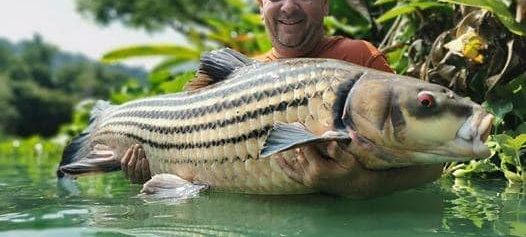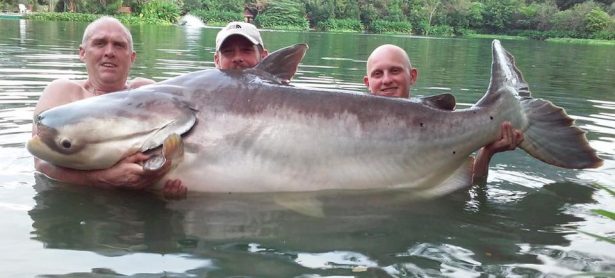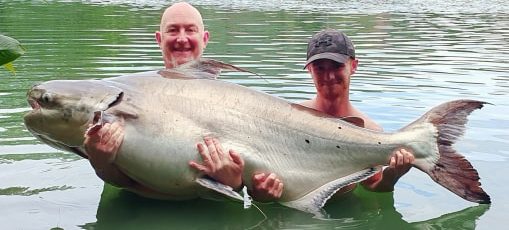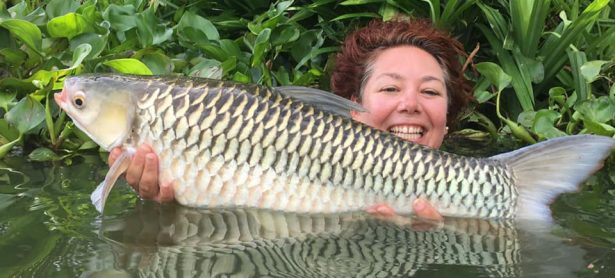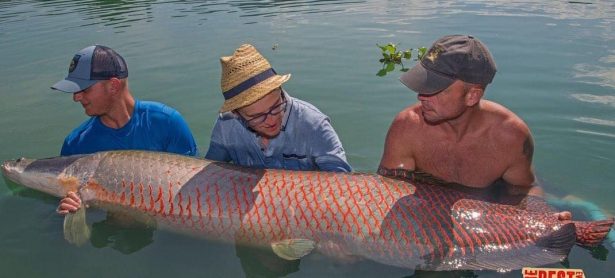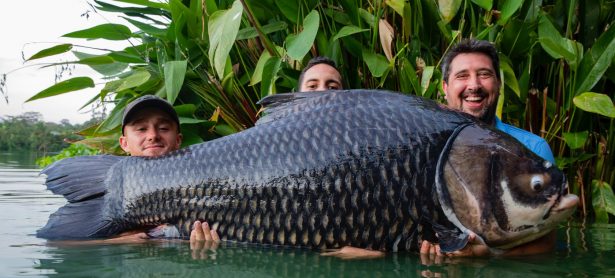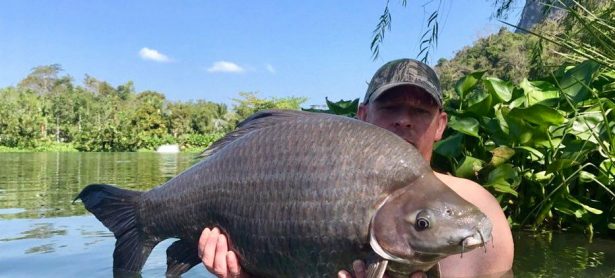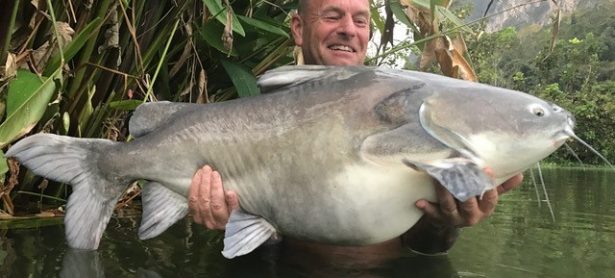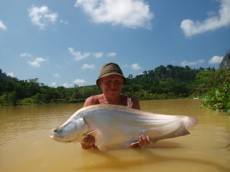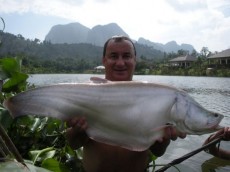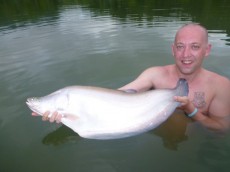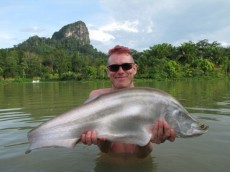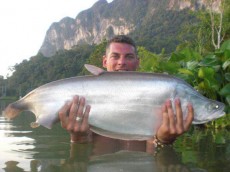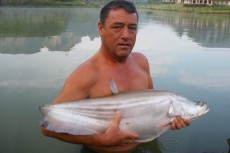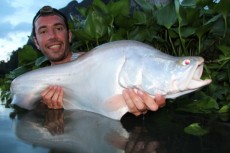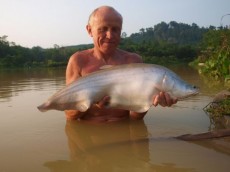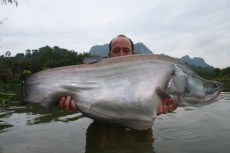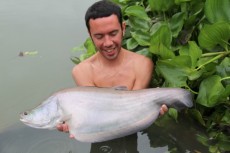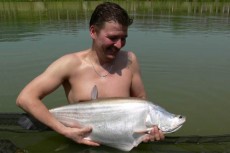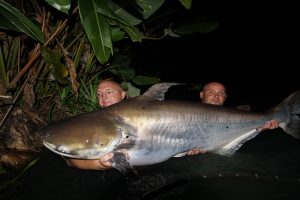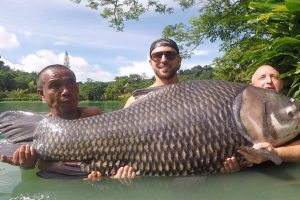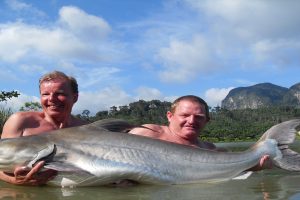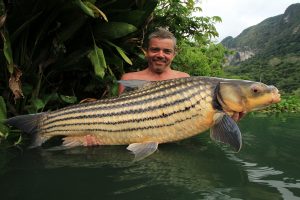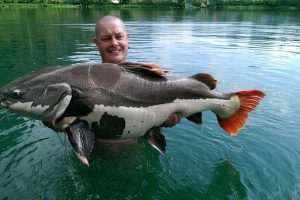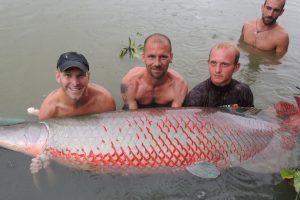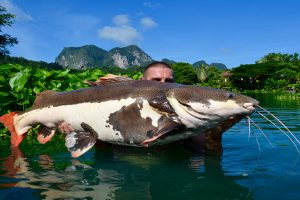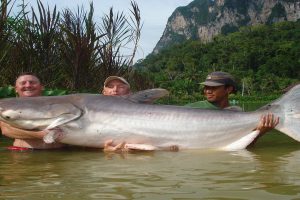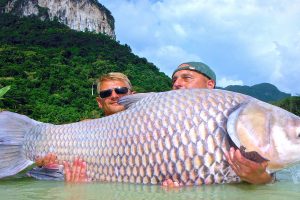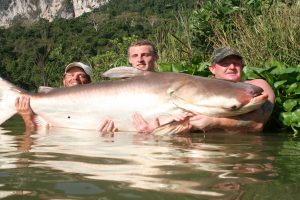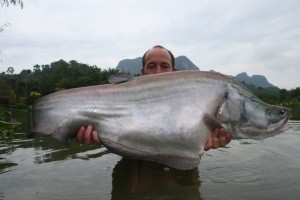 Name: Giant featherback (black featherback).
Name: Giant featherback (black featherback).
Species: Chitala lopis.
Thai name: Pla satu.
Max length: 1.5m.
Max weight: 25kg.
IGFA record: 9.8kg (13lb 6oz).
Diet: Small fish, shrimp, prawn, frogs, worms, crustaceans, and insects.
To fish for our spotted giant featherback, worms are the top bait, and also worth a try are prawns. Another good method for catching these fish is float fishing with live shrimp or small fish strips. The giant featherback is also a very sporting fish to target on the fly using shrimp patterns. Use a sink tip line with a slow figure-of-eight retrieve. Giant featherback feed best during and straight after rain, and early morning and late evening seem to be the best times to target these fish. Our giant featherback feed mostly at the bottom of the marginal slopes. They are cautious feeders and will drop a bait if they feel any resistance, so use a light lead on a Solar Tackle run ring, and use a cork ball or small polyball as your buffer bead. Set the indicators at their lightest setting with plenty of slack line to the rig. The take will be a slow deliberate run, and if you are float fishing a majority of your bites will be signaled by the float rising and lying flat – strike immediately this happens.
On the strike be ready for the fish to make a fast jump and back flip as they try to shed the hook, and keep the line tight when they jump. As the giant featherback approaches the landing net they often jump, so be prepared. When the fish is in the net our guide will inject the fish before any further handling, and while the guide is injecting the fish and removing your hook, you should be getting your camera ready, as you will only have seconds to take a quick picture. We have learnt with these fish that they will not tolerate being handled or restrained in a net for very long. When our guides tell you enough, stop and release the fish for someone else to enjoy. Giant featherback must be gently moved back and forth in the water while they recover, and it may take our guide several minutes to perform this task, as they will not release the fish until they are confident it has regained its strength, so please be patient.
General facts on the giant featherback:
Giant featherback are also known as knife fish or sheath fish due to their long, knife-like body. Giant featherback are usually are found in lakes, swamps, and river backwaters. They prefer still waters and can survive with low oxygen. They prefer low light levels, and mainly these fish are nocturnal, usually cruising during the twilight hours. They hunt live prey and will try any fish that fits into their mouths. Young giant featherback shoal under plants and bushes for security, whereas more mature specimens become territorial and eventually become loners. These fish can also breathe air to survive in stagnant waters with low oxygen. The giant featherback has a dark greyish-brown back with vivid silver flanks with a long knife-like body and a long anal fin. In the centre of the body there is a flag-like dorsal fin, but they have no ventral fins. Their long anal fins enable them to make graceful forward and backward movements.
They have a large toothed mouth. Most giant featherbacks are afflicted with cloudy eye colour when they age; it is perfectly normal. Featherback come from Southeast Asia specifically Thailand, Cambodia, Laos, Malaysia and Indonesia. Featherback spawn at the start of the rainy season at then end of May to June in flooded grassy areas. In our lake they spawn once we have three days of continual rain, usually in June, when they take refuge in the water hyacinths in the top bay. Spawning is at night over a three-day period. In the Mekong and Chao Phraya basins the giant featherback is endangered due to habitat loss and overfishing, and they are a protected species in Indonesia. Here at Gillhams we are very proud that our featherback species are breeding and thriving in the perfect environment we have created for them.



